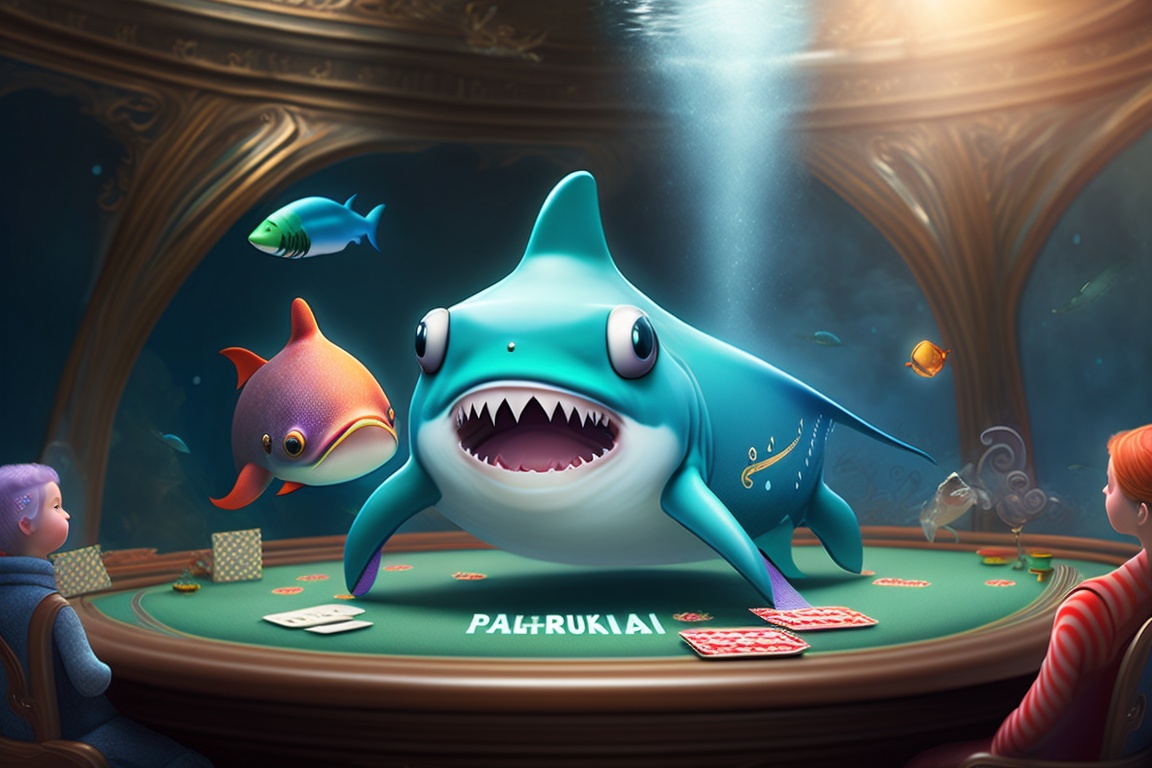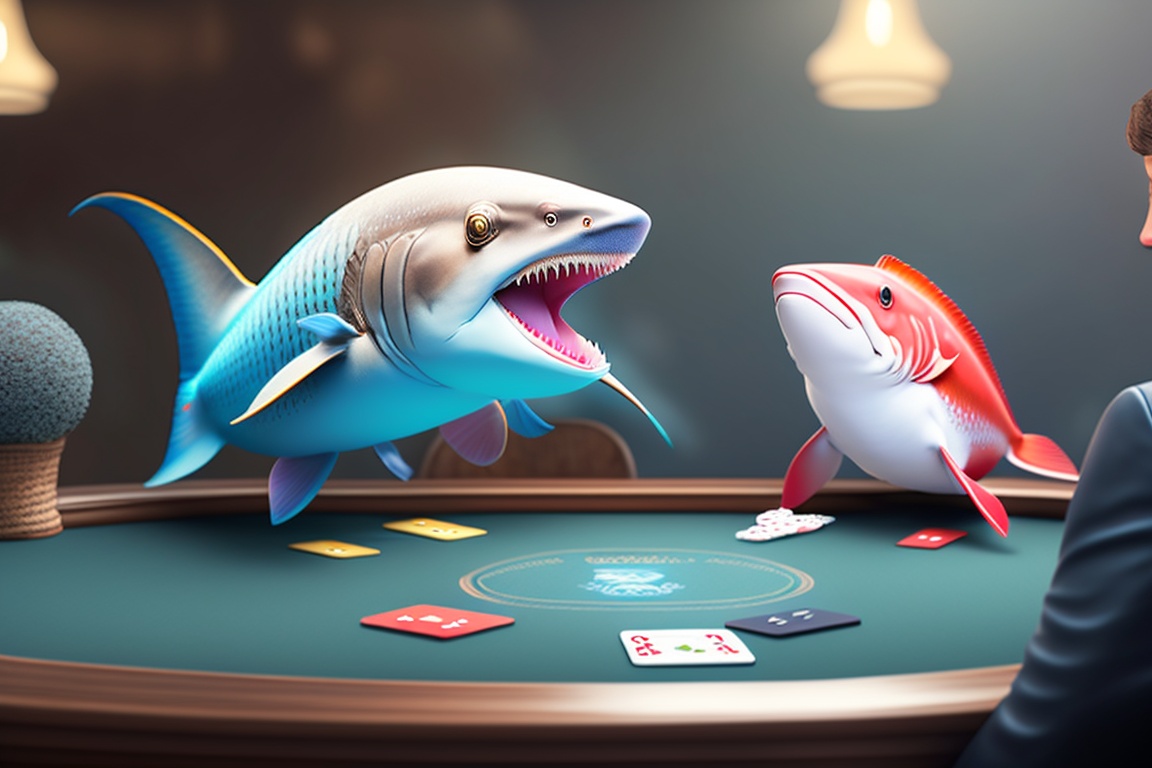How to quickly identify a weak player or a fish at the table?

Many popular rooms and networks have banned trackers. On PokerOK, users were initially unable to play with stats. Partypoker came to abolish trackers in 2019. Rooms justified the restrictions with concern for the ecosystem and a equal conditions for all customers. Some rooms have refrained from banning stats, but have taken to eradicating software to find weak players. Pokerstars consistently banned: Sharkystrator, Magic Seat, TableScan Turbo, Sharkyscanner.
Some of the poker rooms are doing without drastic moves so far, but it can happen at any moment. We should not forget about mobile applications, where trackers are not in favor either. How should the average player who is used to calculating fishes at the table by statistics? A simple and effective solution: use something that is difficult to ban - our brain!
How did players select before?
The easiest way to find a weak player is statistically. The more often the opponent enters the pot, the higher the chance that he is an amateur. However, we know nothing about the opponent until the first hand is played. That is why we focus on the basic poker principle: treat an unknown player as a regular and act carefully.
The second recommendation from training videos and poker books sounds like this: reevaluate your opponent after a few hands. Sometimes 5-10 hands are enough to draw a conclusion about the level of a particular opponent at the table with HUD. Let's say a player has accumulated 70\10 (VPIP\PFR) stats in 10 hands. Even this data tells us that the player is weak and loose. We can reasonably make a few assumptions with this data:
- Opponent likes to watch the pot, but does it passively. Change the mark in the tracker from "unknown" to "loose-passive".
- On the postflop the opponent will call several bets with weak hands. For example, he will call 3 bets with a top pair with no kicker, or even a second pair.
- On the foundation of the previous idea follows a logical adaptation: instead of standard bets of 2/3 of a pot, we move to tighter bets.
- When an opponent with statistics 70/10 is aggressive we should make an instant fold. A loose-passive opponent will only press with a strong made hand.
- If bluffs are acceptable against an unknown opponent, it makes no sense to squeeze an opponent out of the bank. The best solution is to avoid bluffs and straightforward value bets with ready combinations.

Fish, amateur, tourist, recreational player - different designations for a weak opponent at the poker table
Another example is an aggressive opponent with 60\50 stats, who managed to 3-bet three times in 10 hands. We won't make a mistake if we classify him as a maniac and make the following adjustments:
- With strong hands we'll show weakness, so that the aggressor punishes himself.
- On the preflop we will play on the stack with weaker hands than we are used to. Let's say we're ready to go all-in with QQ+, AK against unknown rival, but against maniac it's a good idea to add JJ and 1010 to our push range.
- On the postflop we'll respond with a call with weaker combinations than against normal players. For example, top pair without kicker is not enough to call 3 streets against unknown, but it will work against ultra-aggressive player.
When multi-tabling is active without HUD, it's hard to figure out a fish. Observations will not replace statistics, but it is possible to determine a weak player without a poker tracker.
8 ways to recognize a fish
Some factors allow you to see your opponent as a recreational player before the first hand. Other clues you can get after a few hands.

Dispersion makes it possible for weak players to win at poker. They don't stand a chance over the distance, but anything can happen in one hand or game.
The signs are arranged according to the loudness of the signals. The first one indicates a fish with 100% probability, the sixth one hints, but variations are possible. Here's the full list:
1. He uses an open limp. Let's explain: a limp is an equalization of the big blind in the preflop. A player enters the pot not by standard raise, but by putting up 1 big blind to see the Flop.
A huge neon sign above the player making the limp instantly lights up saying, "Hi, I'm a loose and passive recreational player, isolate me completely!"
A strong hand even such a player would open with a raise and not give up the initiative with the first action. Occasionally we will encounter a limp-raise line, but not too often. If you see such a trick from your opponent, write down a suitable note. In the future, you'll be able to make a strong combination on the postflop and trap its creator for little money.
2. Sitting at the table with an incomplete stack or underbought. The sign is almost as good as a limp in the preflop. We bet it lower because of the existence of opponents using SSS or MSS strategies. Both approaches involve playing with 30-40 big blinds. Sometimes at the same table you may run into two players without 100B in the stack. One will be an MSS pro, the other an amateur. You need to play more hands to make an accurate conclusion.
3. Places the blind out of turn to get into the game faster. The rules of poker provide two options for seating at the table. The first involves immediately starting the game in exchange for a big blind out of turn. The player sits down at the table and gets a hand in the next hand. The second option is for the poker player to take a seat at the table and wait his turn to bet the big blind. The professional player understands that paying 1 BB each time for a fast start is a waste of money. The amateur is eager to start right away, and he doesn't mind paying the extra blind. The only justification for a blind out of turn is a whale at the table. If your opponent is so weak that he will make up for the loss of 1 big blind in a few hands, it is worth getting into the game right away. Most professional players immediately check the box next to "don't bet the big blind out of turn".

There are also mixed types of opponents, combining elements of a fish and a regular. Some of them are capable of playing at a slight advantage over the distance.
4. Chooses a strange size of bets. Classic sizing in poker looks like this: Raise - 3 BB, 3-bet - 9 BB, 4-bet - 20-22 BB. Exact numbers of raises depend on the opponent's previous actions. Weak players don't know about betsizing, so they give themselves away:
- A classic 4-BB opener. The old poker books recommended raising that much. Now the standards have shifted downward.
- Gay 3-bet. We opened trades with a 3-bet raise and our opponent 3-bet to 5 big blinds. That size gives us a chance to call with any hand. No one will spare two blinds to see the common cards.
- Too big a 4-bet. The opponent opened 3 BB, we 3-bet to 9 BB, the opponent bet 27 BB. An experienced player makes a 4-bet 2.2 times the 3-bet. An adequate opponent in the example would have 4-bet 20 BB.
This is a common mistake made by inexperienced or weak tight regulars. To simplify the choice of bet size and speed up the process itself, many advanced players use auxiliary programs like: PartyCaption, 888Caption, StarsCaption and iPoker Tools. The software makes it possible to make bets according to predetermined patterns.
5. Pushes every hand. Two arguments for aggressive opponent being an amateur:
- There are 1,326 starting combinations in no-limit Texas Hold'em. The strongest are pocket pairs and Broadway. There are 238 combinations, or about 19%. mathematically, 4 out of 5 times an opponent will go all-in with garbage.
- Constant pushes are not even a stretch to be considered a sane strategy. In most situations, all players at the table will fold, and the aggressor will get 1.5 BB. Every once in a while, he'll pick up another player's raise and end up with as much as 4.5 BB. More adequate ways of playing the same hands will bring dozens of times more.
Constant pushes can be a sign of your opponent's tilt. Both professional players and amateurs lose control. During the tilt, their quality of play will be at the same level.
6. Shows unusual hands on showdown. Here it's simple: if we make 3-barrels to our opponent on a dangerous board with potential draws, then his calldown and pass to the river with a strong top pair is reasonable. If the opponent shows a 3-pair on showdown with no chance of strengthening, that's a strong argument for weakness. Another example is playing on the stack in the preflop. A 5-bet push in a late position with pocket queens is the normal decision. This kind of action with K9o deserves close attention and a "weak player" label on the rival.

Loose-aggressive opponents in poker are often called "donkeys" rather than "fishes"
7. Picked a strange nickname or avatar, writes regularly in chat. Regulars actively multi-table and don't waste time on dialogues in chat. Either turn it off through the poker client, or with a special layout. But active talkers often turn out to be recreational players. In recent years, poker rooms have been removing the ability to write to chat from the software.
Some poker books emphasize that people with children on their avatars often play poorly. So do users with the nicknames "Ferrarilover", "PhilIvey1" and so on. However, for every weak player with such a nickname there is always a "OMGClayAiken". Phil Galfond, the online poker menace and three WSOP bracelet winner, played under this nickname. Sometimes the signal can be seen in the player's country of residence. Poker players from rich countries are more willing to part with their money. Players from Canada, USA, UK, China, Netherlands, Australia are always welcome at the table. Clients from the Russian Federation, Ukraine and Belarus, on the contrary, often show themselves to be neat regulars.
8. Playing 1 or 2 tables at the same time. Professionals increase their income from the game by multi-tabling. Amateurs play 1 or 2 tables, sometimes in different disciplines. How to know how many tables the opponent plays? Some clients lobbies allow you to search players nickname. In some cases the number of multi-tabling tables allows to determine the opponent's level with a high probability.
Summary
Poker rooms may change their mind and give up on fighting regulars and poker trackers, but the skill of recognizing a weak player in the shortest possible time will still be useful. In a live poker, the ability to quickly spot an amateur is one of the keys to success at the table. With 20 hands an hour being played offline, recreational players are worth their weight in gold. Being able to quickly spot a fish and find the flaws in their strategy will be important for as long as poker has exists.
News, catalog updates and great deals are published in the PokerEnergy telegram channel. Sign up to not lose +EV.





 Log in
Log in  Register
Register 